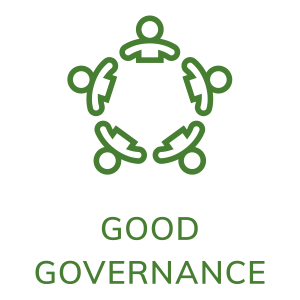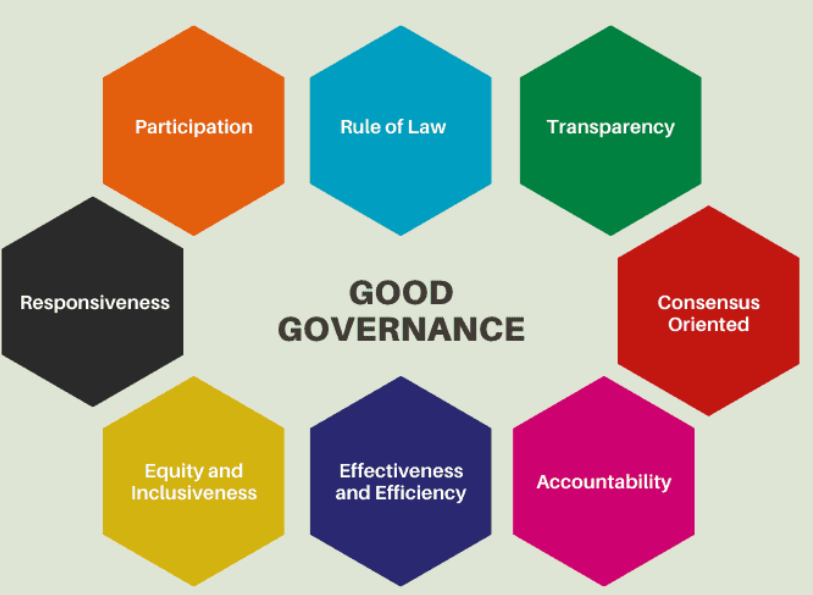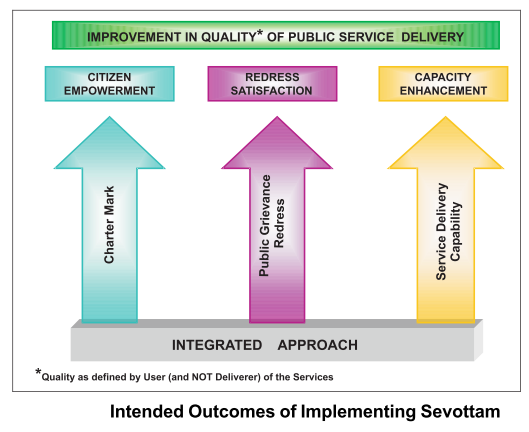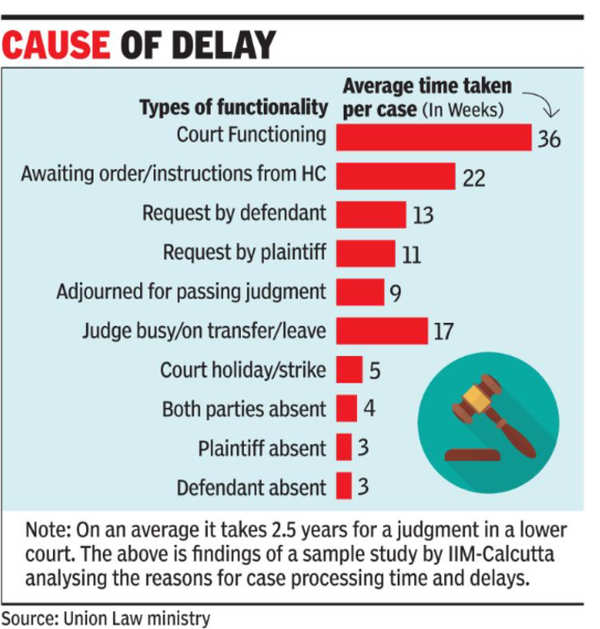




Disclaimer: Copyright infringement not intended.
Introduction:
Good governance is key to a nation’s progress. Towards making a New India by 2047, good governance is the only way forward - Cabinet Secretary Rajiv Gauba said this at an event marking Good Governance Week, 2022.
The Government has articulated his vision of good governance, which includes ‘Minimum Government, Maximum Governance’ and Whole of Government approach. Towards realizing this vision, a number of efforts have been undertaken to facilitate a participatory, accountable, transparent and responsive government to the people of the country. The importance of delayering, delegation of power and digitalization in governance cannot be emphasized enough.
Good Governance Day:
Good Governance Day is celebrated every year in India on 25th December as the birth anniversary of former Prime Minister Atal Bihari Vajpayee. Good Governance Day was established in 2014 to honor Prime Minister Vajpayee by promoting awareness among the Indian people of accountability in government.
Keeping this principle in mind, the Government of India has declared Good Governance Day as the working day for the government.
Governance:
According to the United Nations (UN), governance refers to the activities of all political and administrative authorities to govern their country. Meanwhile, as stated by the International Monetary Fund (IMF), governance is a concept in which a country is managed, including economic, policy, and legal aspects.
Thus, in general, governance has the meaning: the decision-making process and the process of determining which policies will be implemented and not implemented.
Defining Good Governance:
In the 1990s, the World Bank became the first international institution to adopt the concept of good governance into lending arrangements for developing countries and introduce the idea to the general public. In its 1992 report entitled “Governance and Development”, the notion of good governance was written as the way in which power is used to regulate the economic and social resources of a country for development.
Now, the term good governance has often been used by national and international organisations. Good governance aims to minimise corruption, take into account the opinions of minorities, listen to the voices of the oppressed people in the decision-making process, and respond actively to the needs of the community now and in the future.
Good governance is the process of measuring how public institutions conduct public affairs and manage public resources and guarantee the realization of human rights in a manner essentially free of abuse and corruption and with due regard for the rule of law.
According to the World Bank (1992) “good governance is central to creating and sustaining an environment which fosters strong and equitable development and it is an essential complement to sound economic policies”.

According to UNDP, “Good Governance is, among other things, participatory, transparent and accountable. It is also effective and equitable. And it promotes the rule of law. Good governance ensures that political, social, and economic priorities are based on broad consensus in society and that the voices of the poorest and the most vulnerable are heard in decision making over the allocation of development resources”
The International Monetary Fund (IMF) has defined the concept “as a broad concept covering all aspects of how a country is governed, including its economic policies, regulatory framework, and adherence to rule of law”.
The IMF very much emphasized promoting the concept of mainly two areas:
Mohit Bhattacharya (2013) has discussed the recent developments of good governance in three ways:
He has also opined that good governance needs to be discussed beyond the World Bank and other funding agencies have been representing this. “A more creative approach would be to treat the issues as new opportunities to have a fresh look at state-civil society relationships in today’s complex world of governance”.
Eight principles of Good Governance:

Participation
Participation by both men and women is a key cornerstone of good governance. Participation could be either direct or through legitimate intermediate institutions or representatives. It is important to point out that representative democracy does not necessarily mean that the concerns of the most vulnerable in society would be taken into consideration in decision making. Participation needs to be informed and organized. This means freedom of association and expression on the one hand and an organized civil society on the other hand.
Rule of law
Good governance requires fair legal frameworks that are enforced impartially. It also requires full protection of human rights, particularly those of minorities. Impartial enforcement of laws requires an independent judiciary and an impartial and incorruptible police force.
Transparency
Transparency means that decisions taken and their enforcement are done in a manner that follows rules and regulations. It also means that information is freely available and directly accessible to those who will be affected by such decisions and their enforcement. It also means that enough information is provided and that it is provided in easily understandable forms and media.
Responsiveness
Good governance requires that institutions and processes try to serve all stakeholders within a reasonable timeframe.
Consensus oriented
There are several actors and as many viewpoints in a given society. Good governance requires mediation of the different interests in society to reach a broad consensus in society on what is in the best interest of the whole community and how this can be achieved. It also requires a broad and long-term perspective on what is needed for sustainable human development and how to achieve the goals of such development. This can only result from an understanding of the historical, cultural and social contexts of a given society or community.
Equity and inclusiveness
A society’s well-being depends on ensuring that all its members feel that they have a stake in it and do not feel excluded from the mainstream of society. This requires all groups, but particularly the most vulnerable, have opportunities to improve or maintain their well-being. Effectiveness and efficiency Good governance means that processes and institutions produce results that meet the needs of society while making the best use of resources at their disposal. The concept of efficiency in the context of good governance also covers the sustainable use of natural resources and the protection of the environment.
Accountability
Accountability is a key requirement of good governance. Not only governmental institutions but also the private sector and civil society organizations must be accountable to the public and to their institutional stakeholders. Who is accountable to whom varies depending on whether decisions or actions taken are internal or external to an organization or institution. In general an organization or an institution is accountable to those who will be affected by its decisions or actions. Accountability cannot be enforced without transparency and the rule of law.
Initiatives for Good Governance in India:
Right to Information
The enactment of the Right to Information Act 2005 marks a significant shift for Indian democracy, because the greater the access of citizens to information, the greater will be the responsiveness of the government to community needs.
Right to Information is derived from our fundamental right of freedom of speech and expression under Article 19 of the Constitution. If we do not have information on how our Government and Public Institutions function, we cannot express any informed opinion on it. Democracy revolves around the basic idea of Citizens being at the center of governance.
As a party to the International Covenant on Civil and Political Rights (ICCPR), India is under an international obligation to effectively guarantee the Right to Information as per Article 19 of the ICCPR.
e-Governance
E-governance, meaning 'electronic governance' is using information and communication technologies (ICTs) (such as Wide Area Networks, the Internet, and mobile computing) at various levels of the government and the public sector and beyond, for the purpose of enhancing governance.
e-Governance in India is a recently developed concept. The launch of the National Satellite-Based Computer Network (NICENET) in 1987 and the subsequent launch of the District Information System of the National Informatics Centre (DISNIC) program to computerize all district offices in the country for which free hardware and software was offered to the State Governments provided the requisite impetus for e-governance.
e-Governance thereafter developed with the growth of technology. Today, there are a large number of e-Governance initiatives, both at the Union and State levels. In 2006, the National e-Governance Plan (NeGP) was formulated by the Department of Electronics and Information Technology and the Department of Administrative Reforms and Public Grievances that aims at making all government services accessible to the common man, ensure efficiency, transparency and reliability of such services at affordable costs to realize the basic needs of the common man.
The NeGP has enabled many e-governance initiatives like:
In addition to the above, State level e-governance initiatives include:
Ease of Doing Business
India has emerged as one of the most attractive destinations not only for investments but also for doing business. India jumps 79 positions from 142nd (2014) to 63rd (2019) in 'World Bank's Ease of Doing Business Ranking 2020'.
With the aim to improve the ease of living and the ease of doing business in India, more than 25,000 compliances have been reduced by the GOI. Positive changes have led to this impressive improvement in India’s ranking in the EoDB index.
India’s major achievement is summarised here:
Apart from these significant improvements, among the 190 economies, India ranks 13th in Protecting Minority Investors and 25th in Getting Credit.
Decentralization
When power is taken away from Central and State governments and given to the local government, it is called decentralization. The basic idea behind decentralization is that there are a large number of problems and issues which are best settled at the local level.
Decentralization has long been recognized as an efficient instrument for development. It builds institutional capacity at the grassroots level, improves delivery of economic and social services to meet people’s needs, and prevents sectarian violence. A strong state is not always associated with a centralized state.
India has made progress in decentralization through three different channels-political, administrative and fiscal-but a lot more needs to be done. Economic and social progress continues to be uneven across population groups, gender groups, and geographic areas. Much more needs to be done to address long-term concerns of uneven development.
Fiscal decentralization: Although the share of local expenditure has increased, more than 50% goes towards interest payments and salaries, leaving less room in the sub-national government’s budget for dealing with a medical crisis like coronavirus, and economic and social development initiatives. There is room for improving economic democracy through fiscal decentralization to create a level playing. field.
Administrative decentralisation: The extent of administrative decentralization varies across different services. There is wide variation in the decentralization of execution and supervision of development programs. For instance, India has devolved the implementation of most education programs to the sub-national level, but financing and oversight in many cases is retained at the national level. There is a huge potential for using administrative decentralization to improve service delivery outcomes by taking advantage of better local information and monitoring.
Political decentralization: In 1992, India approved the 73rd 74th Constitutional Amendment Act. This encompassed a set of reforms implementing a nationally-standardized and decentralized system of local government. The third-tier institutions—Panchayati Raj Institutions (PRIs) and Urban Local Bodies (ULBs)—have emerged as a crucial building block in taking governance to the people at the grassroots.
The twin acts have in many ways genuinely opened up the democratic spaces by bringing new voices and issues to the fore. The sheer number of elected representatives at the third tie is a testimony to the legitimization of local governance. The most noteworthy development is significant women’s representation in Panchayats. The proportion of elected women representatives has been steadily rising since the enactment of the 73rd Act. Currently, India has 260,512 Panchayats with 3.1 million elected representatives, of which a record 1.3 million are women.
While there is merely 7–8 percent representation in Parliament and State Assemblies for women, an astounding 49 percent of elected local representatives (in states like Odisha it has crossed 50 percent) are women.
Citizen’s Charter
A Citizens' Charter represents the commitment of the Organisation towards standard, quality and time frame of service delivery, grievance redress mechanism, transparency and accountability. Department of Administrative Reforms and Public Grievances, in the Ministry of Personnel, Public Grievances and Pensions, Government of India, in its efforts to provide more responsive and citizen-friendly governance coordinates the efforts to formulate and operationalize Citizens' Charters. Various Central Government Ministries/ Departments/ Organisations have brought out their Citizens' Charters. With a view to ensure effective implementation of the Citizens' Charter, Nodal Officers have been appointed in the concerned Central Government Ministries/ Departments/ Organisations.
The basic objective of the Citizens Charter is to empower the citizen in relation to public service delivery. Six principles of the Citizens Charter movement as originally framed, were:
(i) Quality: Improving the quality of services
(ii) Choice: Wherever possible
(iii) Standards: Specify what to expect and how to act if standards are not met
(iv) Value: For the taxpayer's money
(v) Accountability: Individuals and Organisations
(vi) Transparency: Rules/ Procedures/ Schemes/Grievances
Sevottam model
Sevottam is an assessment-improvement model that has been developed with the objective of improving the quality of public service delivery in the country. The model was conceived by the Department of Administrative Reforms & Public Grievances (DARPG), Ministry of Personnel, Public Grievances and Pensions in 2006.
The word "Sevottam" is a combination of two Hindi words: Seva (Service) and Uttam (Excellent). It means “Service Excellence”, emphasizing the idea of “Service”. It symbolizes the change in mindset within the Government, from administration and control to service and enablement.
Objectives
The key components of Sevottam are captured with the following objectives:

‘Minimum Government – Maximum Governance’
Governed by the principle of ‘Minimum Government – Maximum Governance’, the Union Budget 2022 laid out a roadmap to strengthen trust-based governance with Ease of Doing Business (EoDB) 2.0 and Ease of Living, and a spirit of increased cooperative federalism.
With the intent to reduce burdensome compliances, the government has repealed 1,486 Union laws in addition to 25,000 compliances that were reduced earlier by the government.
Good Governance Index
The Department of Administration Reforms and Public Grievances (DARPG), Government of India launched the Good Governance Index (GGI) Framework and published the ranking for the States and Union Territories (UTs) in 2019 on the occasion of Good Governance Day, i.e., 25 December 2019. The ranking is done as a biannual exercise.
Based on the GGI Framework, the Index provides a comparative picture among the States while developing a competitive spirit for improvement.
Direct Benefit Transfer
With the aim of reforming the Government delivery system by re-engineering the existing process in welfare schemes for a simpler and faster flow of information/funds and to ensure accurate targeting of the beneficiaries, de-duplication and reduction of fraud Direct Benefit Transfer (DBT) was started on 1st January 2013.
With the rapid rollout of Aadhaar in the country, it was felt possible to move to a system of transferring cash benefits directly to the poor.
DBT has shown promising results in pilot schemes being run in different parts of the country. These include PAHAL (modified DBTL for LPG subsidy), Public Distribution System (PDS) in Puducherry, Chandigarh and Mahatma Gandhi National Rural Employment Guarantee Act (MGNREGA) payments in Jharkhand, Bihar, etc.
Challenges to Good Governance:
Some of the above are discussed below:
Corruption
2021 Corruption Perceptions Index ranked India in 85th place out of 180, on a scale where the lowest-ranked countries are perceived to have the most honest public sector. Various factors contribute to corruption, including officials siphoning money from government social welfare schemes.
Centralization of power and authority
In contemporary India, most States are governed by Chief Ministers who have centralised authority in their own offices.
A successful leader of a political party in India acts as a patron who has access to money and/or the resources of the state. Patronage is necessary to win elections and to sustain the party’s organisation. Elections are won by building coalitions of local leaders who command the votes of different sections of society. These local and State leaders win votes by acting as patrons to a segment of the electorate.
Internal party factionalism and the ambition often associated with politics pit one party leader against another, threatening the position of the Prime Minister or Chief Minister in power.
This constant internal threat to a leader’s authority and the need to maintain control of both party and government make Ministers centralise power to retain their position.
Criminalization of politics
The recent report on ‘Analysis of Criminal, Financial, and Other background details of Union Council of Ministers, Post Cabinet Expansion on July 7, 2021″ by National Election Watch (NEW) and Association for democratic reforms (ADR) highlights:
Out of 78 ministers, 33 (42%) ministers have declared criminal cases against them.
Delay in Judicial Decisions
IIM Calcutta study has found that along with long pendency of cases, issues such as judges’ absence, repeated adjournments and courts refusing to simplify processes add to judicial delay. More than 60% of court time is spent on reasons other than court functioning.

Poorly empowered Grassroots Democratic Institutions
The inadequacy of funds has also stood in the way of the successful work of the Panchayati Raj. There is a lack of proper cooperation and coordination between the people and the officials like Block Development Officers, the District Officers, etc. They are the tendency towards the politicization of the local administration, lack of co-ordination between the popular and bureaucratic elements, lack of proper incentives and promotion opportunities for administrative personnel and apathetic attitude of the government servants towards development programs etc.
The World Bank has identified a number of challenges to good governance which assume significance for developed and developing countries. These factors deal with the following political and administrative aspects
Way Ahead:
India needs to deepen and unbundle the decentralization agenda to promote economic and social democracy and provide budget responsibility to local governments.
More fiscal resources—fiscal stimulus programs—are needed to support the local governments. Increased fiscal stimulus will also promote rural structural transformation. Under the present arrangement, local governments make little or no contribution to the design and implementation of economic and social development programs. They have limited autonomy and resources to provide meaningful service. Earmarked transfers designed by the center should not continue to dominate local government finances.
It is vital to make an accelerated transition from a top-down to a bottom-up approach in the development agenda to improve the delivery of public goods. Take education and health, where responsibility for design, financing and service delivery are assigned to different levels of government. Providing the right incentives, and aligning rules and practices in decentralisation will improve economic and social outcomes.
2nd Administrative Reforms Commission’s Recommendations
CITATIONS
https://www.unescap.org/sites/default/files/good-governance.pdf
https://cleartax.in/s/e-governance
https://darpg.gov.in/sites/default/files/decision4.pdf
© 2025 iasgyan. All right reserved